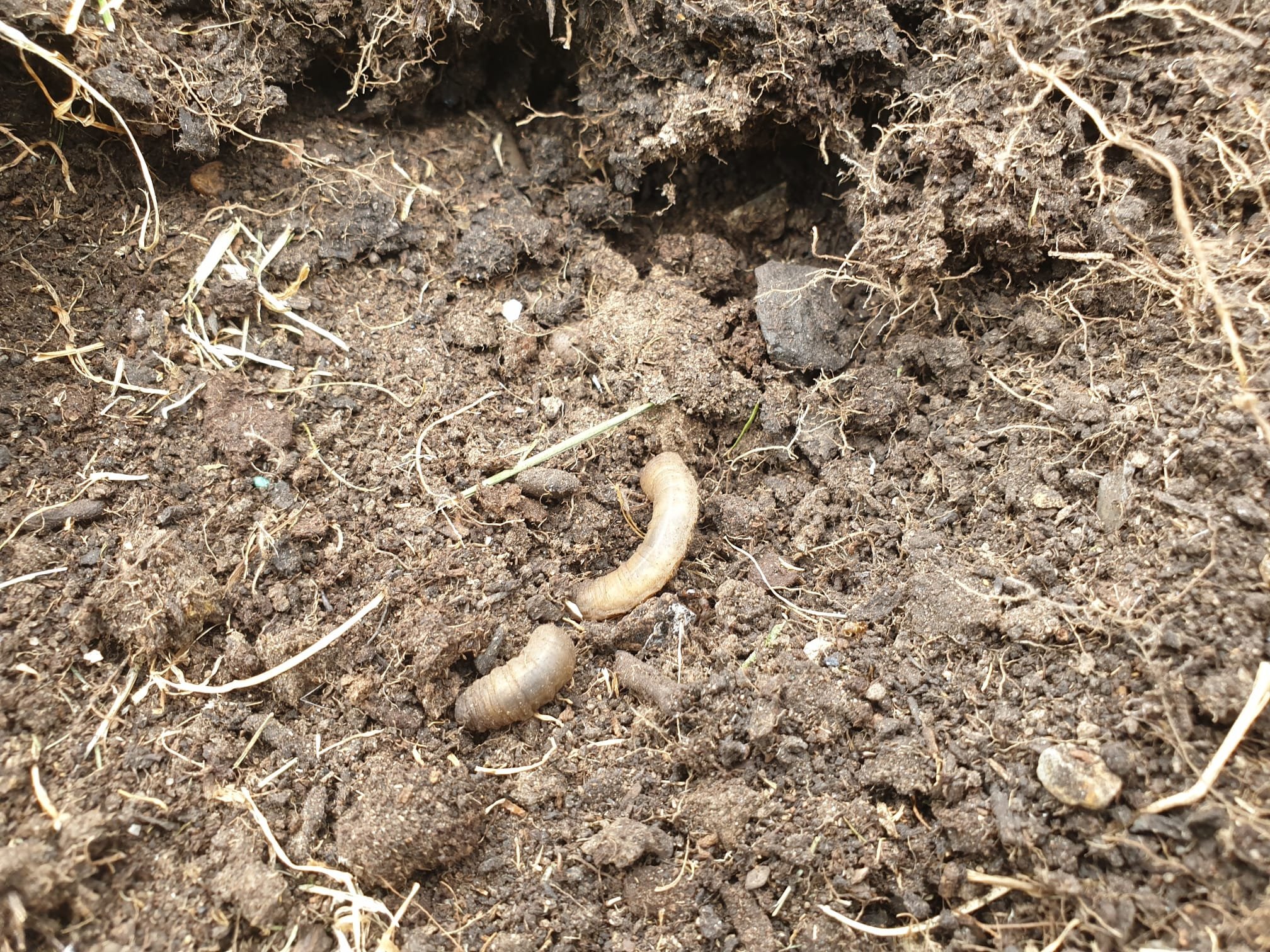What are Leather Jackets and Chafer grubs?
Is your lawn looking a bit patchy?
Have you noticed birds pecking ferociously at the lawn?
Have large clumps of turf been lifted overnight?
If you can answer yes to anyone of these questions, then you are extremely likely to have an infestation of Lawn pests, namely Leather Jackets and/or Chafer grubs.
First thing to do is seek an Expert opinion, it is extremely important to understand the enemy, and believe me, they are going to be your enemy. These lawn pests will destroy a lawn if left untreated!
Leather Jackets
Leather jacket grubs are juvenile “Daddy Long Legs” or “Crane Flies” – there are hundreds of varieties, but it should be noted they ultimately all do the same thing… eat the lawn roots.
Look out for patches of yellowish or brown lawn. By lifting up the turf you are likely to find leather jackets, Spring is where immense damage can be caused to your lawn, but treatment is unlikely to help with the problem at this stage. When fully grown, the leather jackets grubs pupate in the soil. When the adult crane fly emerges, the pupal case is often partly pulled out of the ground and left sticking up above the lawn surface.
Crows, magpies, rooks and starlings will actively hunt for leather jackets in turf. These birds can leave small round holes in the turf where they have inserted their beaks. These birds can also search out for chafer grubs in a similar way.
Generally, the adult crane flies or daddy-longlegs actively lay eggs in the soil surface from August to October. The eggs hatch a few weeks after they have been laid and these young leather jackets start to feed on plant roots as long as conditions are mild enough.
For treatment, THIS is the period where the best results occur, with a follow up in the Spring of the following year.
Chafer Grubs
These are young maggot-like larvae before they hatch into chafer beetles. Chafer beetles are commonly one of two types: the Garden Chafer and Cockchafer. The Garden Chafer has an annual life cycle whereas the Cockchafer is larger and more destructive because it lives in the soil for 3 years, eating roots before it hatches. They live near the soil surface and will only burrow deeper once Autumn temperatures start to drop.
The Adult Chafer beetle lays eggs in the soil around July, with the grubs hatching and eating through the lawn roots during the Summer and early Autumn. As soil temperature drops, the Grubs will burrow deeper into the soil to stay warm, resurfacing in Spring to undo all the hard work put in over the Winter and early Spring, they are relentless until they fully mature to Chafer beetles in May / June.
Further damage to lawns is caused by crows, foxes and badgers who tear up the grass to look for these grubs during the months when the grubs are active.
Treatment
It isn’t going to be easy, there is no “Silver bullet ” solution to these pests. There is no legal chemical control available so a more natural approach is required.
There are biological solutions available, which are totally safe to apply to your lawn in the form of Nematodes, I will say once again, this is not an easy fix as many steps need to be followed to enable a prolonged reduction in the effectiveness of these pests.
Water is key to success, the lawn MUST be well watered throughout treatment and the right Nematodes for the particular pest handled in the correct fashion as to not waste your time and money. For these reasons it is always best to employ experts who have received training to apply the Nematodes as part of a Pest control management plan.
We can help, please complete the form below if you would like a free assessment.



